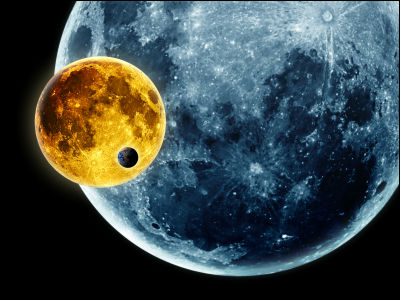NASA announces development of `` nuclear heat rocket engine '' aiming for Mars with heat of nuclear fission

NASA announced a project ' Demonstration Rocket for Agile Cislunar Operations (DRACO) ' to develop a 'nuclear thermal rocket engine' jointly with the US Department of Defense Advanced Research Projects Agency (DARPA). The nuclear heat rocket engine has advantages such as 'reduction of navigation time' and 'reduction of risk for astronauts', which is useful for realizing manned Mars missions. NASA plans to test a nuclear-thermal rocket engine by 2027.
NASA, DARPA Will Test Nuclear Engine for Future Mars Missions | NASA

DARPA, NASA Collaborate on Nuclear Thermal Rocket Engine
https://www.darpa.mil/news-events/2023-01-24
darpa-nasa_draco_nonreimbursable_interagency_agreement_final_2023-01-11_.pdf
(PDF file) https://www.nasa.gov/sites/default/files/atoms/files/darpa-nasa_draco_nonreimbursable_interagency_agreement_final_2023-01-11_.pdf
NASA is proceeding with research and development for the realization of a manned Mars mission, but it is estimated that it will take three years to make a round trip between Earth and Mars if the current rocket engine is used. The size of the load is a concern. NASA aims to reduce the round trip time to about two years to reduce the risk of astronauts, and has been developing a nuclear heat rocket engine that can reduce the flight time.

Newly, NASA has signed a non-refundable contract with DARPA and announced that it will jointly develop a nuclear heat rocket engine with DARPA. According to the announcement, DARPA will be in charge of rocket system-related procurement, scheduling, and ensuring security. In addition, NASA has declared that it will conduct a demonstration test of a nuclear heat rocket engine by 2027.
According to this announcement, the nuclear heat rocket engine can produce a large amount of electricity using nuclear fission reaction, and advanced calculation and communication are possible. Furthermore, by transferring the heat generated by the nuclear fission reaction to the liquid propellant, it is said that space can be navigated more than three times more efficiently than conventional chemical rockets.
'DARPA and NASA have had a fruitful partnership in advancing technology, from the Saturn V rocket that brought humans to the moon for the first time, to refueling satellites,' said DARPA Administrator Stephanie Tompkins. Outer space is vital to modern commerce, scientific discovery and national security.The breakthrough in space technology from the DRACO project has made the transportation of goods to the moon more efficient, ultimately helping humans reach Mars. It is essential to do so,” he said.
In addition, NASA is jointly conducting research with the United States Department of Energy (DOE) to apply nuclear fission fuel and nuclear reactors to rocket engines, but the technology being developed by NASA and DOE has a different purpose than the DRACO project. It is planned to be used for
Related Posts:







